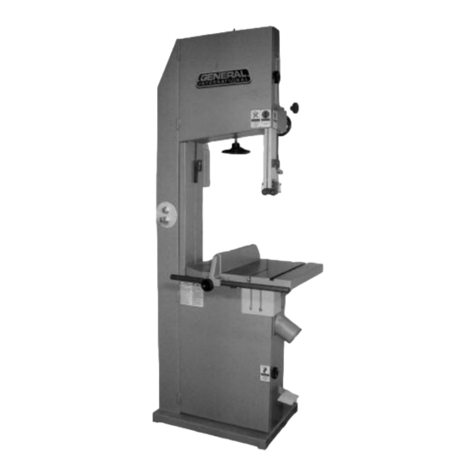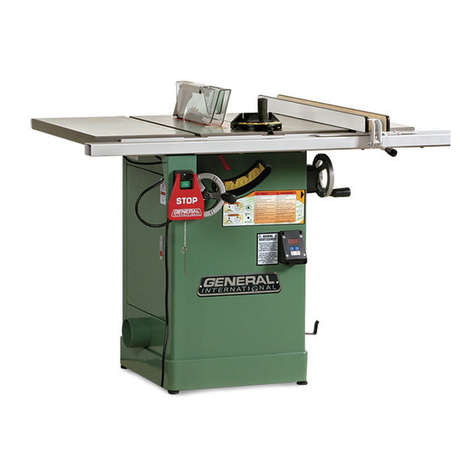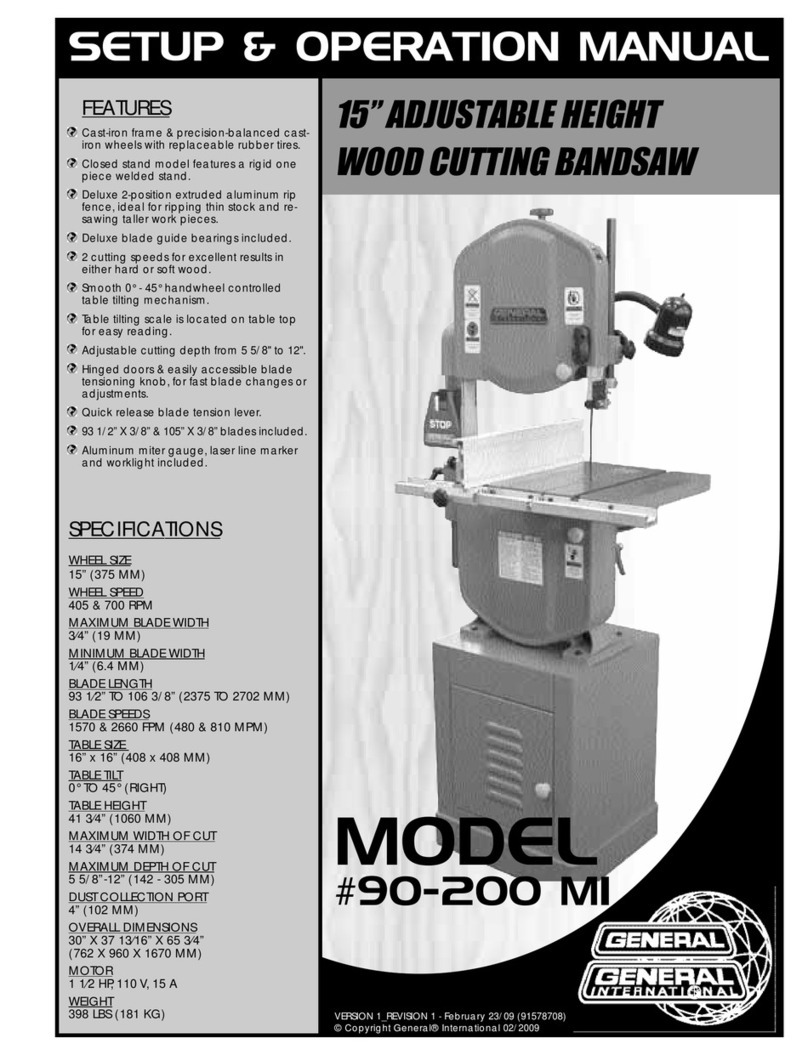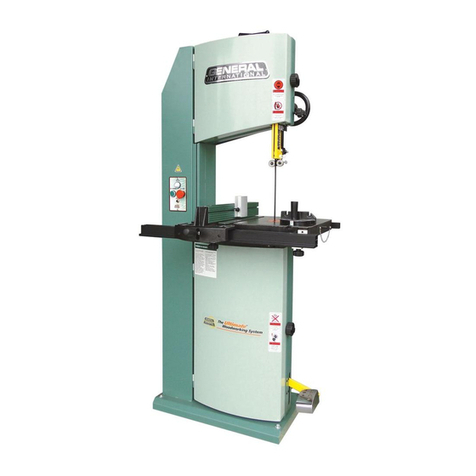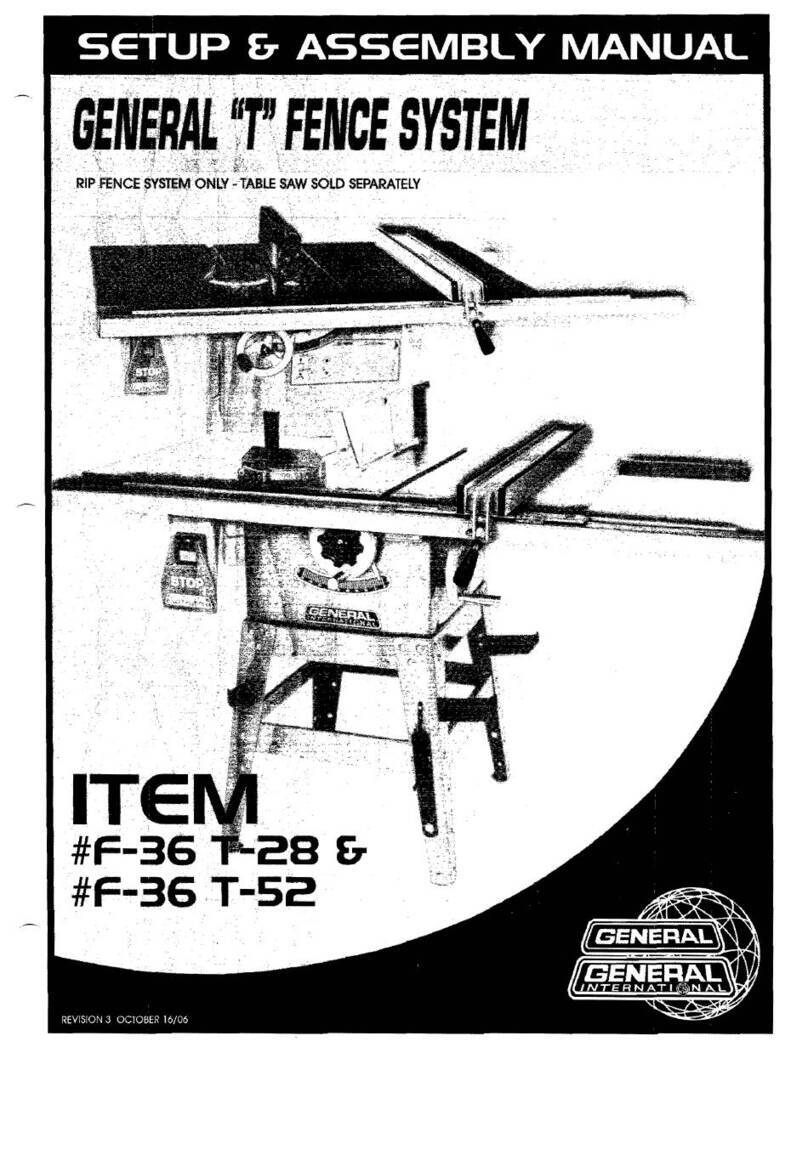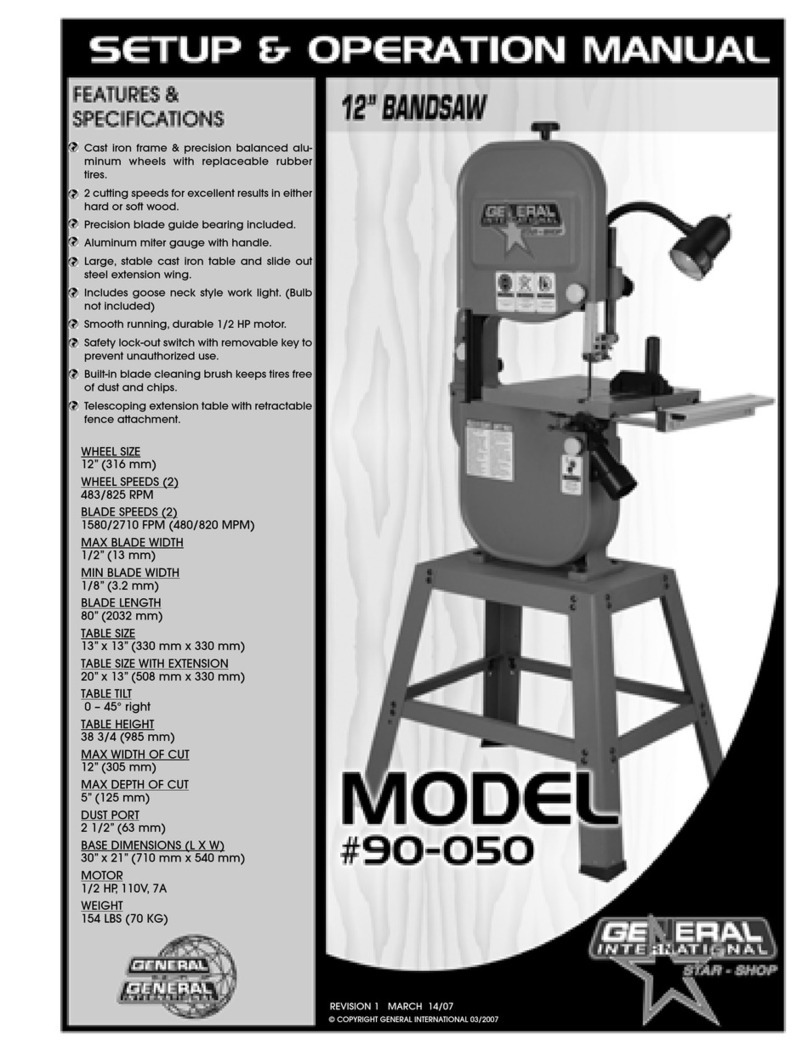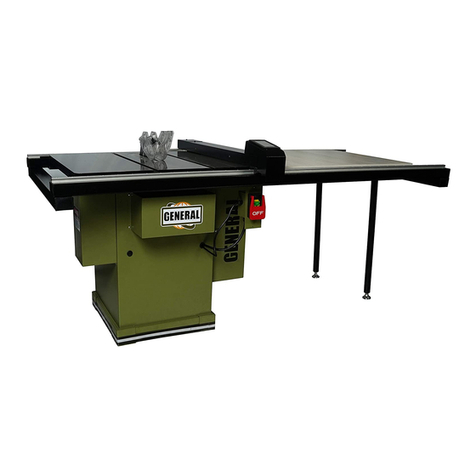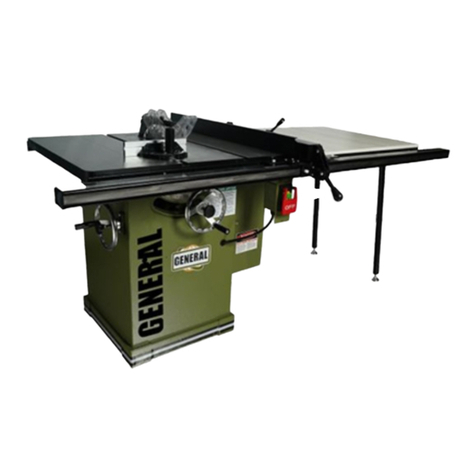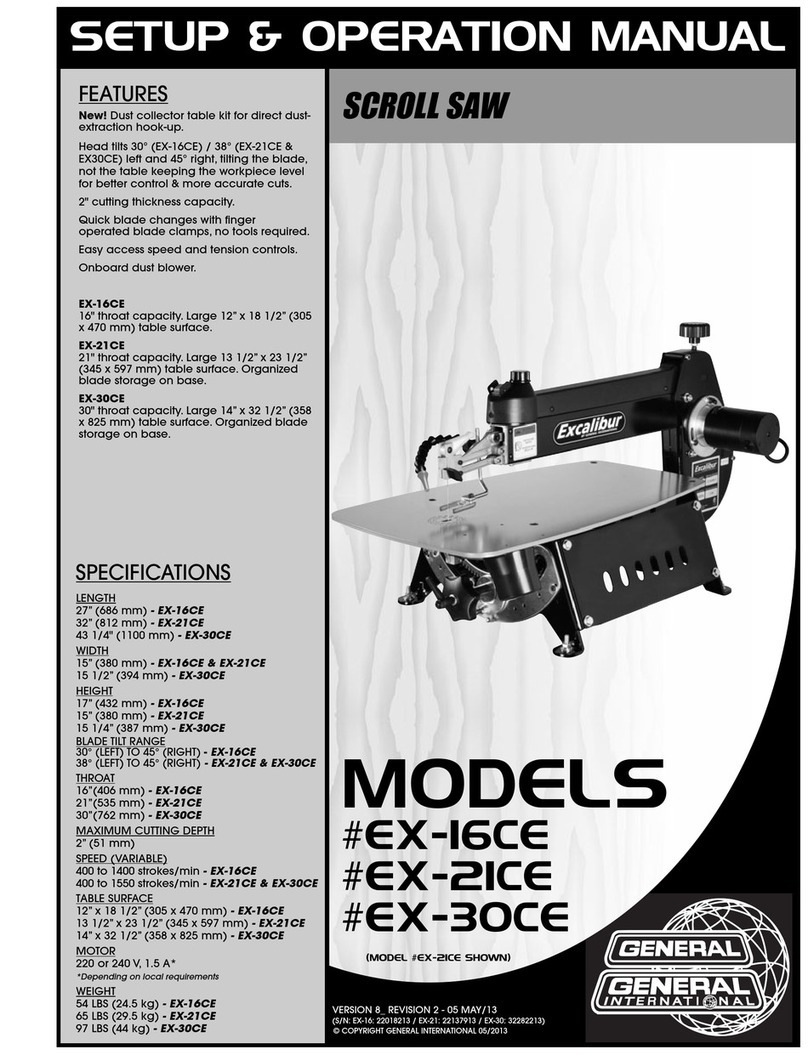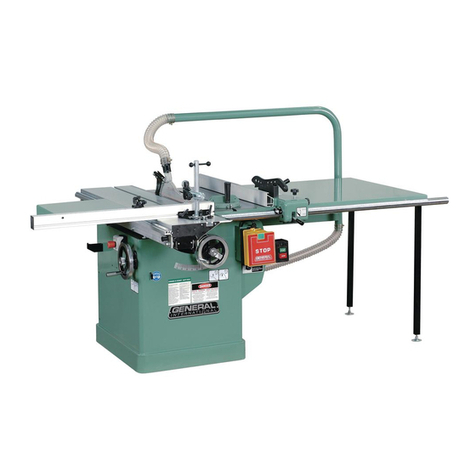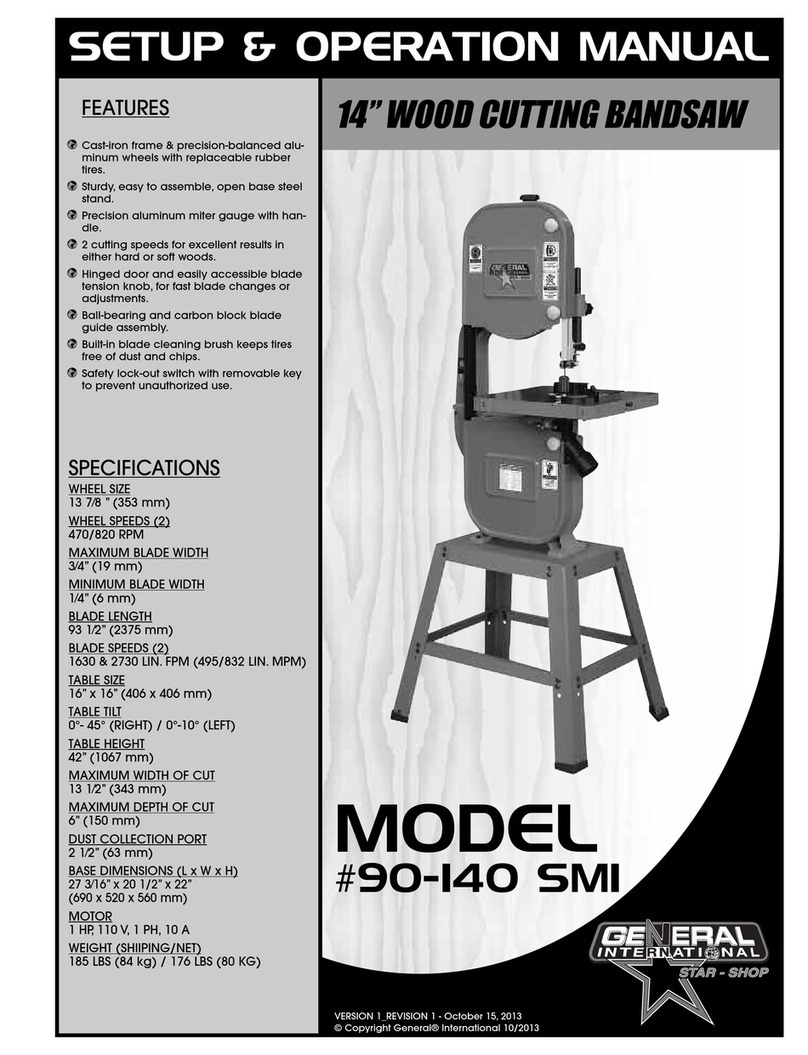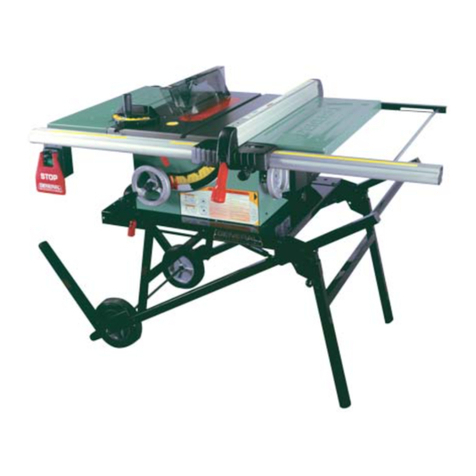
5
RULESFORSAFEOPERATION
To help ensure safe operation, please take a moment to learn the machine’s applications and limitations,
as well as potential hazards. General®International disclaims any real or implied warranty and holds itself
harmless for any injury that may result from the improper use of it’s equipment.
1. Do not operate the bandsaw when tired, distracted
or under the effects of drugs, alcohol or any medI-
cation that impairs reflexes or alertness.
2. The work area should be well lit, clean and free
of debris.
3. Keep children and visitors at a safe distance when
the bandsaw is in operation; do not permit them to
operate the bandsaw.
4. Childproof and tamper proof your shop and all ma-
chinery with locks, master electrical switches and
switch keys, to prevent unauthorized or unsupervised
use.
5. STAY ALERT! Give your work your undivided attention.
Even a momentary distraction can lead to serious
injury.
6. Fine particulate dust is a carcinogen that can be
hazardous to health. Work in a well-ventilated area.
Wear face, eye, ear, respiratory and body protec-
tion devices.
7. Do not wear loose clothing, gloves, bracelets,
necklaces or other jewelry while the bandsaw is in
operation.
8. Be sure that adjusting wrenches, tools, drinks and
other clutter are removed from the machine and/or
the table surface before operating.
9. Keep hands well away from the blade and all
moving parts. Use a brush, not hands, to clear away
chips and dust.
10. Adjust and position the blade guides before starting
to cut.
11. Adjust blade tension and tracking before starting to
cut.
12. Blade teeth must point down toward the table.
13. Be sure that the blade has gained full operating
speed before starting to cut.
14. Always use a clean, properly sharpened blade.
Dirty or dull blades are unsafe and can lead to
accidents.
15. Use suitable workpiece support if the workpiece
does not have a flat surface.
16. Make sure the workpiece is securely held in place
in the vise.
17. Do not work on long stock without adequate sup-
port on the out feed end of the table.
18. Do not push or force stock into the blade. The band-
saw will perform better and more safely when work-
ing at the rate for which it was designed.
19. Avoid working from awkward or off balance posi-
tions. Do not overreach and keep both feet on floor.
20. Keep guards in place and in working order. If a
guard must be removed for maintenance or clean-
ing be sure it is properly re-attached before using
the saw again.
21. Never leave the machine unattended while it is run--
ning or with the power on.
22. Use of parts and accessories NOT recommended
by General®International may result in equipment
malfunction or risk of injury.
23. Never stand on machinery. Serious injury could re-
sult if the tool is tipped over or if the cutting tool is
unintentionally contacted.
24. Always disconnect the saw from the power
source before servicing or changing accessories
such as blades, or before performing any mainte-
nance or cleaning, or if the machine will be left
unattended.
25. Make sure that the switch is in the “OFF” position
before plugging in the power cord.
26. Make sure the machine is properly grounded. If
equipped with a 3-prong plug it should be used with
a three-pole receptacle. Never remove the third
prong.
27. Do not use this bandsaw for other than its intended
use.Ifusedforotherpurposes,General®International
disclaims any real or implied warranty and holds it
self harmless for any injury, which may result from
that use.


